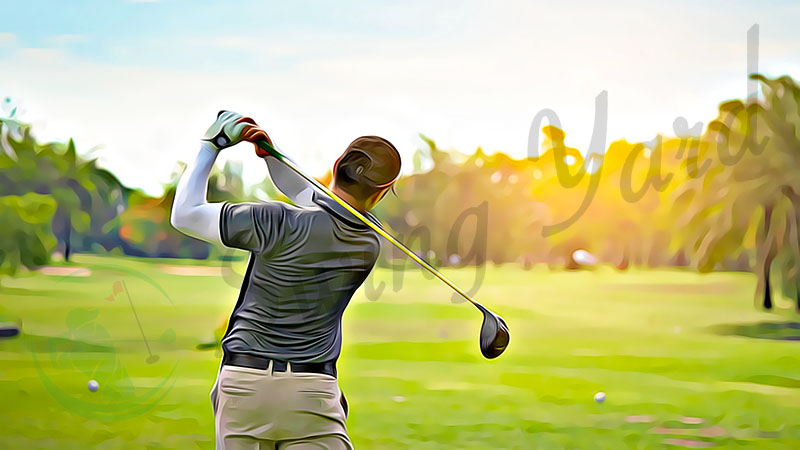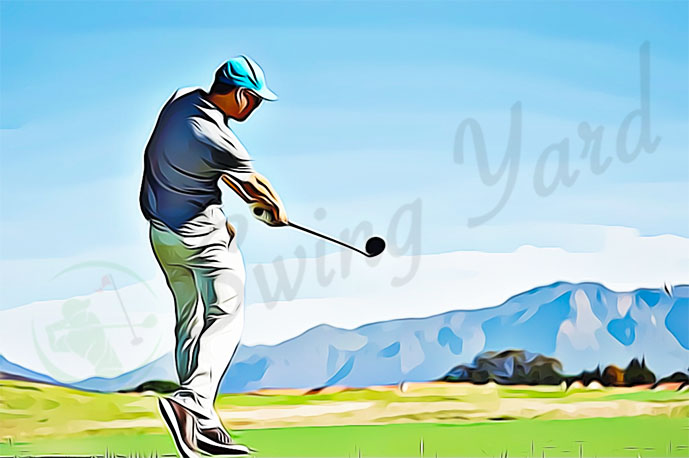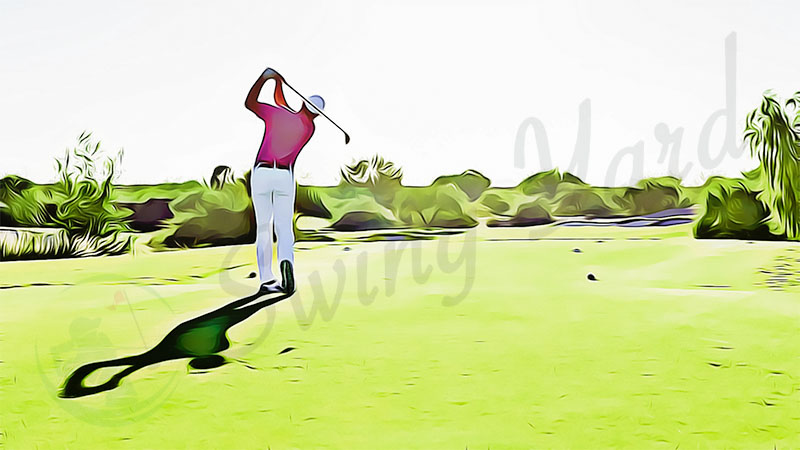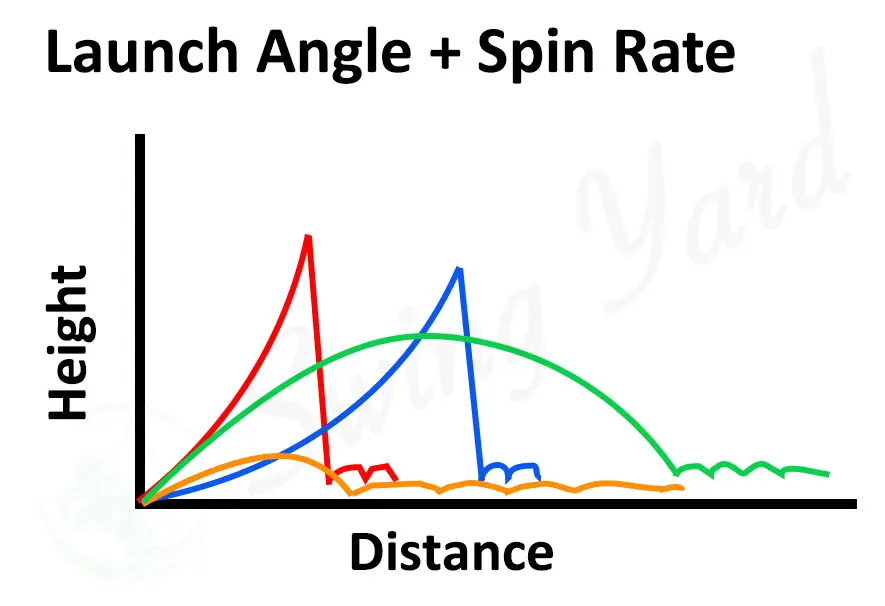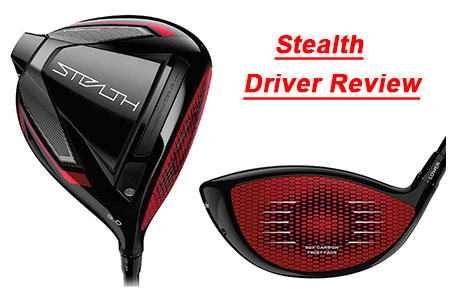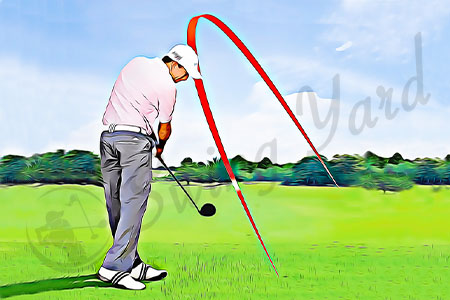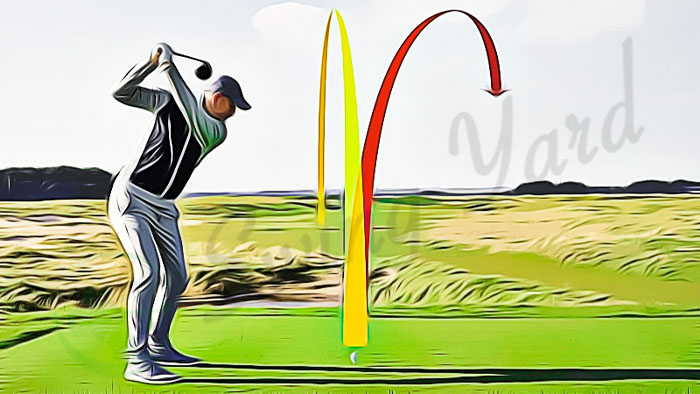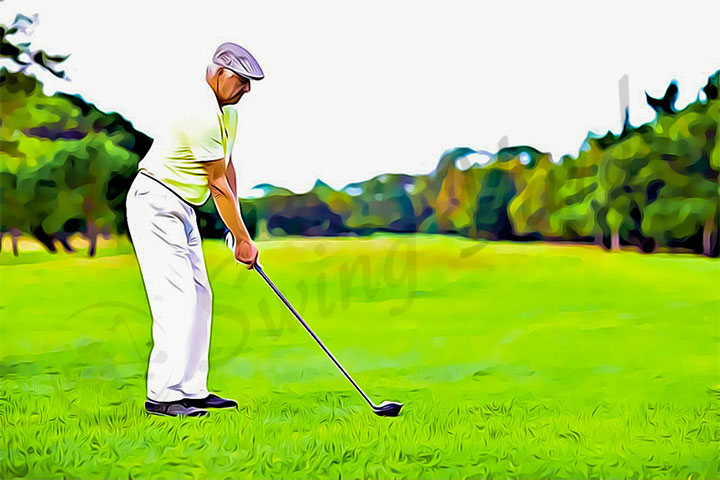Why Do I Hit My Driver So High? How to Stop Popping It Up
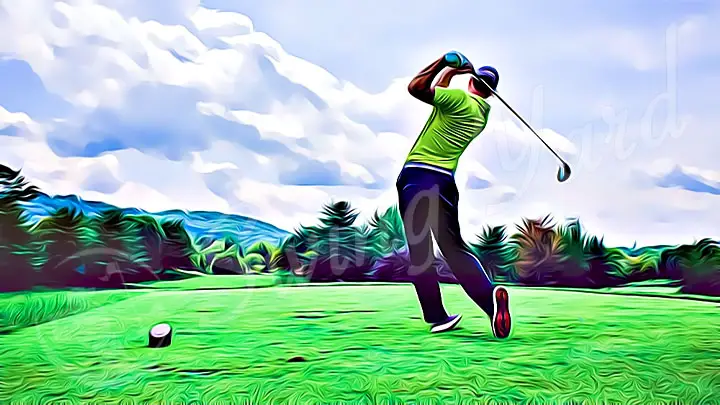
By Coach Erik Schjolberg – Jan 12, 2024
Contents
Key Takeaways
- You’re teeing the ball too high
- Your swing path is too steep
- Incorrect ball position leads to incorrect swing path
- Use impact tape/powder spray to identify EXACTLY where contact is made
- Practice hitting up on the ball to correct a steep swing
Popping up the golf ball can be a really frustrating thing!!
You’ve been smashing your driver down the middle for most of the round… you’re a couple of shots up on your buddies in your foursome, and suddenly for no reason, after careful planning of where you want your ball flight to end up on the fairway, and “boom”…
…the ball has been launched straight up in the air and lands roughly no further than you hit your 9 iron, or worse, one of your wedges.
You know that this particular hole you needed to hit a perfect drive to reach the green in regulation. Your tee shot was only 100 to 150 yards, and you know there’s no club in your bag that will allow you to reach this par 4 in regulation.
This changes everything you’ve planned. Hitting driver too high may have just caused you to surrender the lead against your buddies.
Let’s take a look at some of the possibilities as to WHY you’re popping up driver.
WHY Am I Hitting Driver Too High?
- Teeing the golf ball too high… most of the time by accident – this gives you much more of a chance to get under the ball, hitting the driver too high on the face, thus a really high ball flight.
- Swing path is too steep to the ball, causing the club head to pass under the ball and hit down vs up and in the sweet spot.
- Incorrect ball position at setup – too far back and you’re likely to hit down on the ball and catch it too high on the face.
- You’re “casting” – a type of golf swing where the club head travels from outside the target line to inside (also known as an “over the top” golf swing).
- Dropping the trail shoulder just before impact – dropping the trail shoulder causes you to lower your swing plane, resulting in hitting under the ball and increasing the launch angle.
Best Driver for Beginners and High Handicappers
If you’re a beginner golfer just starting out, or you’re a high handicapper… you might want to look into drivers that are specifically designed for beginners in mind.
This could honestly solve your problem right there. We have a pretty extensive review of those drivers specifically if you want to check that article out here.
How to STOP Popping Up Driver
Now comes the million-dollar question. How do we solve the pop-up problem?
Ball Position
Well, the first way to not hit the ball too high is make sure your ball position is just off the lead foot’s heel or maybe even as far forward as the toe.
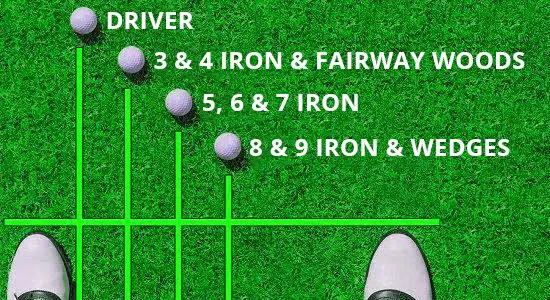

By doing this, you can make sure impact occurs while the club head is moving slightly UP in the golf swing, instead of down. So yes, you want to hit the golf ball on the up part of your swing.
Tee Height
Next, make sure not to accidentally tee the ball excessively high. In other words, only half the ball should be above the height of the top of the driver (when you have the golf club rested on the ground. This is the standard tee height.
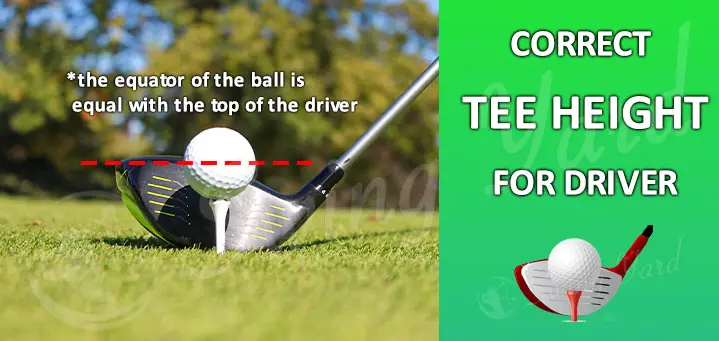

Body Position
Now that we have our tee height, ball position, and we know we need to impact the golf ball on the upswing, the next step is to get our bodies in the correct position for the driver.
The easiest way to start the setup and get everything into the correct position for swinging up with the driver on our tee shots is to start with our feet together and the golf ball directly in front of the heel of the lead foot.
Next, step back with the back foot into a relatively wide stance (wider than your normal iron swing).
Once there, place the club head on the ground behind the ball, and place your lead hand in its proper position on the club. The butt or grip end of the club should be pointing somewhat towards your lead armpit.
Now, place your trail hand on the golf club in the proper golf position. This should automatically tilt your shoulders and upper body towards your trail side. You need this tilted position to guarantee that the angle of impact is going up and not down.
Check this guy out below. He has the wide stance, the ball positioned up by the front foot, his shoulders are tilted back, the ball is teed up to the right height… PERFECT driver setup right there!
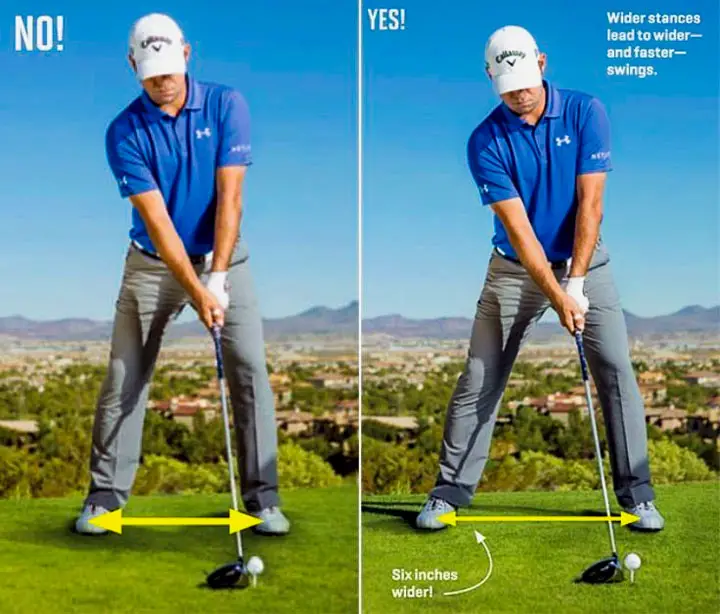

Focal Point
Finally, choose a focal point either near the back of the golf ball or just behind the ball. Keep this focal point as it will help guarantee your head stays behind the ball through impact and that you are hitting up at impact.
To reiterate and sum up this section:
- Standard tee height should be where only half the golf ball is above the top of the driver when rested on the ground.
- Driver ball position should nearly always be either off your lead foot’s heel or slightly inside the toe.
- Upper body should be tilted away from the target line.
- Focal point should be on the back of the golf ball or just ever so slightly behind it.
- And your swing at impact should be UP and not down (I know, it sounds counterintuitive to hitting the golf ball lower, but trust me. When you hit down with driver, it causes you to catch the ball too high on the face, and likely a big reason why you are slicing your driver).
Video – Golf with Aimee
If all that wasn’t enough, here’s an excellent video explaining most of what I just talked about.
She doesn’t have her ball forward as much as I would like to see most amateur golfers who are struggling with the driver pop up, but it’s a good visual representation of the spine tilt I was talking about.
And let’s be honest, she’s one of the best women drivers of the golf ball on youtube.
Drills That Will Help
Hitting UP Into an Impact Bag
The first simple drill to prevent the pop up ball flight is to use an old bean bag chair, or a golf impact bag, and practice short strokes while making sure you’re hitting up and not down during the swing.
While doing this, choose a focal point just behind the bag and keep your eyes there during your back swing and through impact.
Impact Tape or Foot Spray Drill
If you’ve never heard of this drill before, it’s basically used to determine where on the face you’re hitting your driver (or any club really). If you’re hitting driver too high on the face, it’s going to pop up the golf ball.
Get some impact tape from amazon, or simply use some foot spray powder. Put it on your driver’s face, swing, and hit the ball.
Now check the face. There will be an imprint that shows EXACTLY where you struck the golf ball with your golf swing.
Just by being aware of where you’re usually making contact on the clubface, you can adjust and fix your golf swing accordingly.
Figure out how to hit the sweet spot and you’ll stop skying your driver in no time.
Get a More Forgiving Driver
If you’re struggling to hit the golf ball in the sweet spot consistently, you may want to consider getting a more forgiving driver. They are basically designed to have larger sweet spots than standard, allowing for the most forgiveness possible in drivers today.
Slow Golf Swing Drill
Once you feel comfortable with the other drills, try to swing the club at a significantly reduced speed for a while.
Really focus on making solid contact in the middle of the face (you learned this in the impact tape drill) and hitting UP on the golf ball.
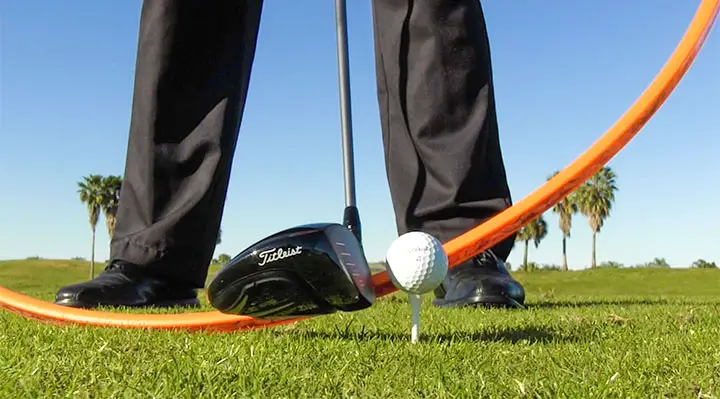

Of course, before you swing, make sure you have the right setup I talked about with the ball position, shaft position at setup, wide stance, and shoulder tilt.
After you can put everything together at a slow swing speed, start hitting your driver a little faster.
Once your swing speed is close to your normal speed, stop there for a while (like a few weeks honestly)! You were probably swinging way too hard before anyway.
Ok, now that you’ve mastered the feel and you’re comfortable you’re not going to pop up your tee shots (and embarrass yourself in front of your golfing buddies), then go for the full Monty and swing away at full power.
Best Golf Drivers Reviews
We’ve done many golf driver reviews in this write up here. If you’ve gotten this far and you’re really looking to up your game, it’s definitely worth checking out a professional’s opinion on the absolute best drivers that are available in the industry to date.
FAQ – Stop Popping Up Your Driver
Note – Some of these FAQs were covered throughout the article, but I still get these questions a lot… so here are the “short and sweet” answers to the most common questions:
Why do I hit my driver so high?
You’re probably hitting your driver so high because you’re making contact with the golf ball too high on the face of the club head, resulting in a high ball flight.
This is caused by a few things, but mainly it’s either one or a combination of not hitting UP on the ball, having the ball position too far back in your stance, or just simply teeing it up too high to begin with.
How can I hit my driver lower?
- Tee the ball lower
- Move the ball forward in your stance (up near your lead foot’s heal or even the toe) to encourage hitting UP on the ball (if you hit down on the ball, it will make contact high on the face, and thus a higher ball flight)
- Make sure you are titled back at setup (encouraging you to hit UP on the ball through impact)
Why do I keep skying my driver?
You keep skying your driver, which is really the same thing as simply hitting it too high, because you either have the ball teed up too high, you’re making contact too high on the face of the driver, or you’re hitting down on the golf ball.
Is it better to hit a driver high or low?
It’s best to hit a driver with a medium trajectory, not too low, not too high. This will provide for your highest average golf drive distance.
The only exception is if you’re hitting into the wind, then it is actually better to hit the ball low so the wind doesn’t decrease the ball flight distance.
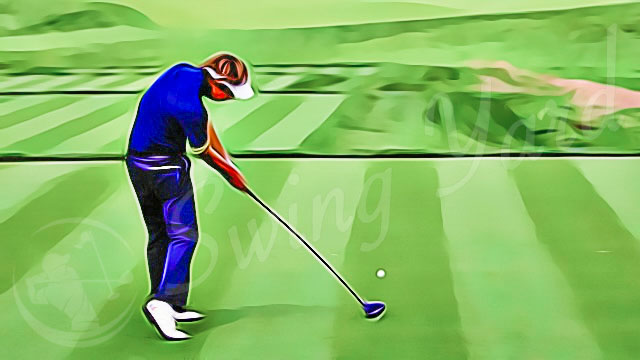

Why do I pop the ball up with my driver?
You pop the ball up with your driver, which is the same as “skying the driver” or simply hitting it too high, because you’re making contact too high on the clubface during your golf swing.
Contacting the golf ball high on the clubface is going to promote a high ball flight type of trajectory.
Why am I hitting my driver high on the face?
- Simply, you have the ball teed up too high
- The golf ball position is too far back in your stance
- You’re hitting down on the ball instead of UP (due to not tilting your rear shoulder down at setup)
How high should you hit your driver?
Ideally you should be hitting your driver around 25 yards high (75ft, or 23 meters). This may seem a little low, but it is the ideal ball flight trajectory for amateur golfers, even with relatively high swing speeds.
If you have an unusually high swing speed, then 30 yards high (90 ft, or 27 meters) is more acceptable.
In fact, you should be hitting ALL of your golf clubs about the same height. There are exceptions of course if you’re playing in windy conditions, in which you’ll want to hit it lower.
Check out the following graphic from Trackman… it’s the average of LPGA tour players (who have a similar swing speed to amateur golfers). You can clearly see they are hitting their driver about 25 yards high.
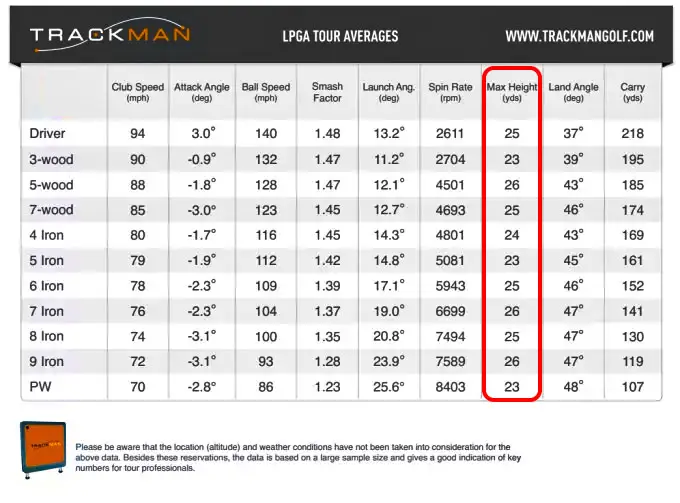

How high do pros hit their driver?
PGA pros hit their driver around 30 yards high (90 ft, or 27 meters). And LPGA pros hit their driver around 25 yards high (75ft, or 23 meters).
In truth, golf professionals hit ALL their golf clubs about the same height.
Check out the graphic below from Trackman showing the averages of PGA tour players.
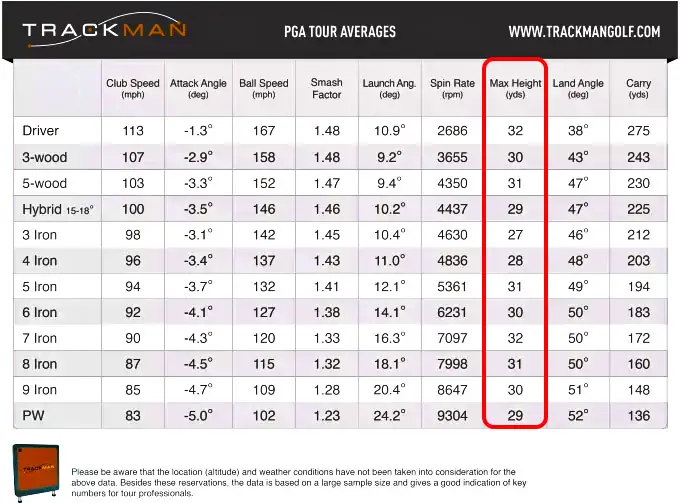

Will a Low Spin Driver Help?
Yes a low spin driver, like the Epic Max LS by Callaway, can help keep the ball from spinning up too high in the air. Most low spin drivers are for the more advanced golfer, but the Epic Max LS adds in extra forgiveness and is geared towards the mid range player with a high swing speed. Check that full review out here if you’re interested.
Final Thoughts
- Make sure not to tee your ball too high. Proper tee height should be where the upper half of the ball is just above the top of the club head.
- Ball position should be off your lead foot, either using the heel or just inside the toe.
- After gripping the golf club, your upper body should be tilted away from your target, even as much as 45 degrees. This tilt will guarantee you hit UP on the ball instead of down.
- And finally, your head and eyes should stay focused behind the golf ball through impact of the swing. Like body tilt, this helps to make sure you swing up at impact and not down.
Practice these tips and drills, and you should be hitting your drives long and straight down the fairway in no time!


